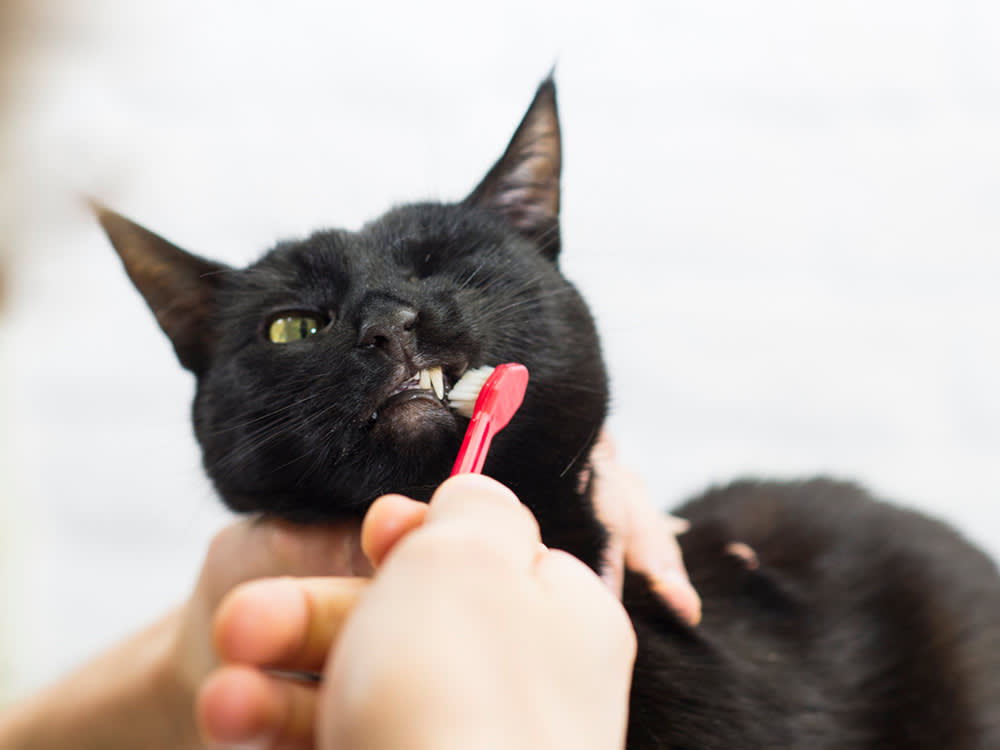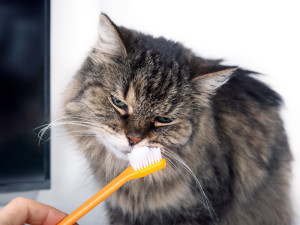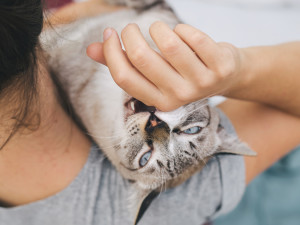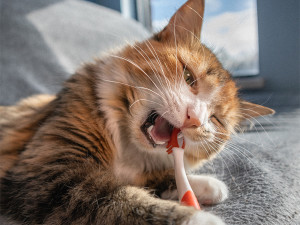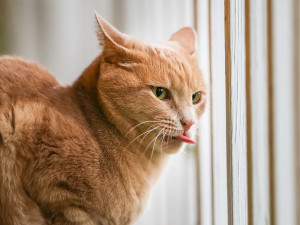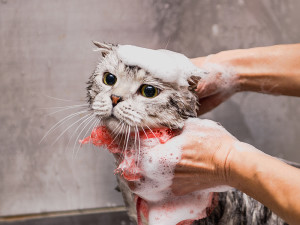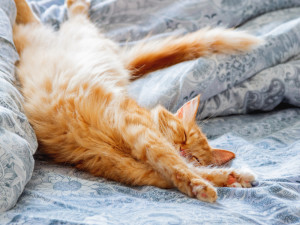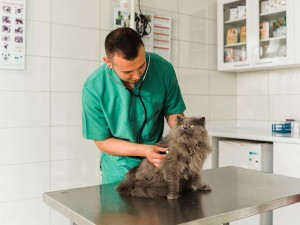Your Cat Hates When You Brush Their Teeth—Here’s What to Do
You can still maintain their dental health without getting an unfortunate bite.
Recently, Kinship editors, one-half of whom are cat parents, were discussing the common vet recommendation to brush your cat’s teeth every day. This level of frequency shocked our staff of seasoned pet parents, simply because they couldn’t imagine their cats letting them come near them that often with a toothbrush. It would just be a lot of teeth, claws, and fur flying, without anyone’s overall physical and mental health — let alone dental health — improving at all.
But, unfortunately, this is not something you can just ignore, even out of concern for your toothbrush-holding hand’s overall wellbeing. As Kinship has reported in the past, all of that bacteria that lives within your cat’s mouth can affect the rest of their body if it’s not taken care of.
According to Bond Vetopens in new tab, a veterinary clinic with multiple locations based in nine cities across the U.S., more than 68 percent of pets over the age of three have “some sort of periodontal disease,” which they define as ”the inflammation or infection of the tissues surrounding the tooth.” In 2017, Cornell University foundopens in new tab that up to 90 percent of cats older than four years old have some sort of dental disease.
“To prevent dental issues such as periodontal disease — a painful condition that causes damage to not only the teeth, but also surrounding structures like the gums, ligaments that hold the teeth in place, and even the jaw bone — it’s important to have a regular brushing routine,” Dr. Gabrielle Fadl of Bond Vet, tells Kinship.
OK, but when I’ve tried the toothbrush with my cat, they freak out. What do I do?
There’s one thing you don’t want to do: force your cat to let you take a toothbrush to their teeth. Cat behaviorist Mikel Delgadoopens in new tab told Kinship in 2022 that, in addition to being unkind, making your cat do anything they don’t want to do is not going to be successful.
“Unfortunately, I think people [believe] ‘I have to do this and I have to do it now … so therefore, I’m going to hold my cat down [to get it done], which 99.999 percent of the time is going to backfire and make things worse,” she says.
Start slow.
Dr. Fadl still recommends teeth-brushing as the number-one way to care for your cat’s pearly whites, but if your cat is not going to tolerate your coming at them with a toothbrush from the jump, you’ll need to ease in. “Start by getting your cat comfortable with your hands near their mouth — don’t jump into using a toothbrush right away,” she says.
She recommends touching the outside of your of your cat’s mouth and lips while you’re petting them. Do this one to two times a day for five days.
Reward them.
Try gently lifting their lip and touching your finger to their gums and teeth. When they allow you to do this, give them a treat immediately. Do this for one to two weeks, keeping sessions under two minutes. Dr. Fadl says to be especially gentle here.
Build up to the real thing.
Next, she says to try the same thing with pet toothpaste for a few days. Remember never to use human toothpaste on your cat; it can be toxic. Once your cat allows your fingers to be in their mouth without fuss, wrap one finger in medical gauze. Touch it to their teeth and follow with a reward. “With time and enough treats, you'll be working up to a full mouth in no time!”
I did all that, but it’s still a no-go with the brush. Now what?
Dr. Fadl to the rescue: “If you’ve tried all the recommendations for brushing your cat’s teeth, and it’s still an unpleasant experience for both of you (or if your cat tries to bite during toothbrushing), don’t worry … you tried your best! Cats are independent, and sometimes it’s just not possible.” She adds that everyone’s safety (including yours!) is the most important thing here.
She says you can try cat dental treats, dental diets, and water additives. Ideally, those would be combined with tooth-brushing, but if that’s truly not gonna happen, these are good steps to take. Dr. Fadl suggests looking for dental treats that have the Veterinary Oral Health Council (VOHC) label on the package.
“The VOHC reviews veterinary dental products and data to ensure that they are effective at plaque and tartar reduction when used as labeled,” she adds. The main takeaway: Doing something to help your cat maintain their dental health is crucial. Your cat might not personally thank you, but their vet will.
Does a toothbrush-resistant cat mean more vet visits?
Dr. Fadl stresses the importance of annual or semi-annual exams, which include a full oral exam. This is especially necessary for a kitty who resists having their teeth brushed. These visits may require dental cleanings under general anesthesia.
“These [professional cleanings] are strongly recommended, as up to 60 percent of painful, dental-related issues in cats can only be identified with an X-ray,” says Dr. Fadl. “Although the anesthesia that is necessary for these procedures can be intimidating, have a conversation with your vet to discuss how to make these procedures as low-risk as possible for your individual pet.”
Here’s one final word of advice: You want to do anything and everything you can so that even if you're not brushing your cat’s teeth every day, most days you're still doing something to improve their dental health. “Tackle the problem from as many angles as possible,” said Dr. Delgado. Even if, according to your cat, that doesn’t involve a toothbrush — ever.
